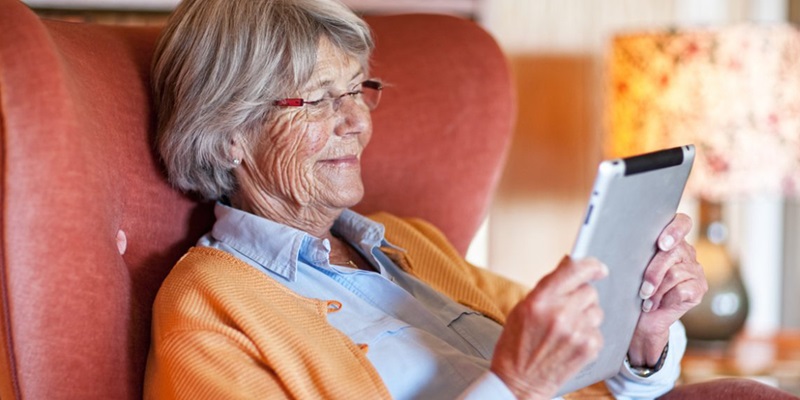Initiatives Assisting Seniors in Accessing Tablets and Internet Connectivity

Beverly Black led a bustling life before the pandemic struck, working three days a week as a child care provider in New York City. However, the lockdown in March 2020 forced her into isolation at home. At 68 years old, Black hadn’t replaced her old computer that had stopped working years ago. In response to the challenges faced by seniors like Black during the pandemic, initiatives were launched to provide internet access and devices. Organizations such as Older Adults Technology Services (OATS), in collaboration with AARP, stepped in to distribute 10,000 Android tablets along with two-year T-Mobile internet connections and training to seniors aged 60 and above living in public housing. Explore diverse programs facilitating computer and internet access for older adults to enhance digital connectivity learn more about it here.
The significance of these efforts became apparent as seniors, a demographic vulnerable to severe COVID-19 outcomes, found themselves isolated without adequate technology. The need for internet access became critical not only for staying connected with loved ones but also for essential tasks like signing up for the COVID-19 vaccine. Many older adults lacked the necessary devices or internet connectivity, exacerbating their isolation. Recognizing this, local governments, nonprofits, and communication companies across the United States mobilized to address the technology gap. Initiatives like Community Tech Network’s Home Connect provided hundreds of free devices, internet services, and virtual training to seniors, acknowledging the importance of technology in mitigating the negative effects of isolation.
The pandemic underscored the necessity of technology for older adults, prompting a nationwide movement to bridge the digital divide. Nonprofits like OATS, Community Tech Network, and Tech Goes Home played crucial roles in providing devices, internet access, and digital literacy training. However, these endeavors incurred significant costs, straining the resources of already cash-strapped nonprofits. The financial burden increased due to the shift to virtual training and the need to send devices directly to individuals’ homes. Despite the challenges, organizations like Tech Goes Home continued their efforts, adapting to the new normal and ensuring that older adults had the tools to navigate the digital world.
Moreover, the pandemic highlighted disparities in internet access among older adults. While internet access is considered essential during the pandemic, data from the Pew Research Center revealed that fewer than three in five people aged 65 and older have broadband internet at home. The situation called for innovative solutions and collaborative efforts to ensure that older adults could access not only the internet but also essential services like telehealth. Initiatives like Connect2Compete, AT&T Access, and Internet Essentials by Comcast offered low-cost internet plans to eligible individuals, addressing the financial barriers to connectivity.
These initiatives not only aimed to provide technology but also emphasized the importance of digital literacy. Nonprofits recognized that mere distribution of devices was insufficient; seniors needed training to make effective use of technology. Programs like Senior Planet by OATS and Tech Goes Home’s digital skills courses became integral components of the broader effort to empower older adults in the digital age. Virtual classes, once conducted in person, became the norm, ensuring that seniors could enhance their digital literacy safely from home.
Despite the progress made, challenges persisted. Some older adults faced difficulties completing virtual training during the pandemic, emphasizing the need for tailored approaches to address diverse learning needs. Nonprofits like Austin Free-Net implemented pilot projects to provide tablets and training to older adults with internet service, but completion rates revealed the complexity of ensuring widespread digital inclusion.
The financial strain on nonprofits was palpable, with increased operating costs due to the shift to virtual formats. Organizations like Tech Goes Home, which provided computers, internet service, and training, incurred additional expenses totaling hundreds of thousands of dollars. Despite these challenges, nonprofits continued their crucial work, supported by donations from companies like AT&T.
The stories of seniors like William Marotta, who utilized his tablet for telehealth visits, underscore the tangible benefits of these connectivity initiatives. Marotta’s experience reflects the broader impact of digital inclusion on healthcare access, especially relevant in an era where telehealth has become a common practice.
However, challenges extended beyond device distribution and internet access. Research revealed that a significant portion of Medicare beneficiaries lacked access to computers with high-speed internet connections. This digital divide highlighted the need for targeted initiatives to address the specific needs of older adults, ensuring that they were not left behind in the digital transformation.
In conclusion, the COVID-19 pandemic served as a catalyst for nationwide efforts to bridge the digital divide among older adults. Organizations, nonprofits, and communication companies collaborated to provide devices, internet access, and digital literacy training. Initiatives like Home Connect, Senior Planet, and Connect2Compete played pivotal roles in ensuring that seniors were not only connected but also empowered to navigate the digital landscape. Despite financial challenges, nonprofits adapted their approaches, emphasizing the importance of technology in addressing isolation and improving overall well-being. As the digital age continues to evolve, these initiatives serve as models for creating inclusive, tech-savvy communities, where older adults can thrive in an increasingly interconnected world.